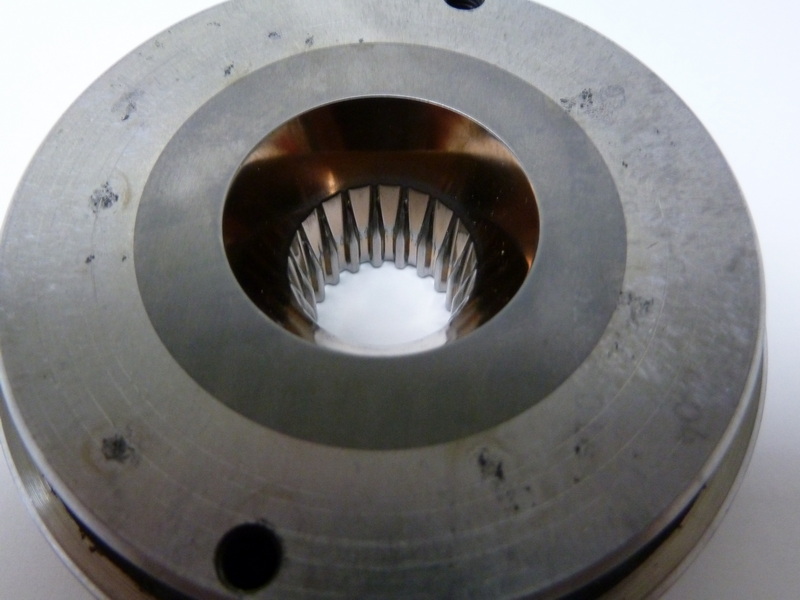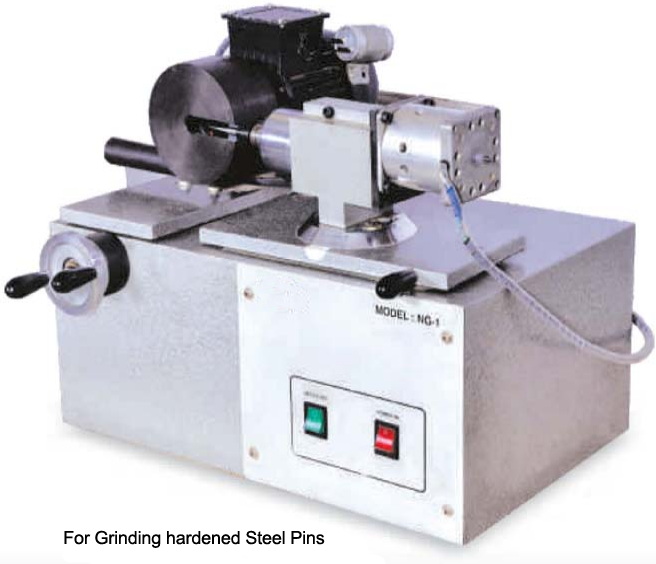Content Menu
● Introduction
● Understanding Carbide Dies
● Benefits of Polishing Carbide Dies
>> Enhanced Performance and Longevity
>> Improved Surface Finish and Precision
>> Reduction of Friction and Wear
● Tools and Equipment for Polishing
>> Essential Tools for Die Polishing
>> Recommended Polishing Compounds
>> Safety Equipment and Precautions
● Step-by-Step Guide to Polishing Carbide Dies
>> Preparing the Die for Polishing
>> Choosing the Right Polishing Method
>>> Manual Polishing Techniques
>>> Machine Polishing Techniques
>> Applying Polishing Compounds
>> Final Inspection and Quality Control
● Common Mistakes to Avoid
>> Over-Polishing and Its Consequences
>> Using Incorrect Tools or Compounds
>> Neglecting Safety Protocols
● Maintenance Tips for Carbide Dies
>> Regular Cleaning and Inspection
>> Storage Recommendations
>> When to Re-polish or Replace Dies
● Conclusion
● Related Questions
>> Q1. What are the best tools for polishing carbide dies?
>> Q2. How often should carbide dies be polished?
>> Q3. Can I polish carbide dies at home?
>> Q4. What safety precautions should I take when polishing carbide dies?
>> Q5. What are the signs that a carbide die needs to be replaced?
Introduction
Polishing carbide dies is a crucial process in the manufacturing industry, particularly in metalworking and machining. Carbide dies are known for their hardness and durability, making them ideal for various applications, including stamping, molding, and cutting. However, to maintain their performance and extend their lifespan, regular polishing is essential. This article will explore the importance of polishing carbide dies, the benefits it brings, the tools and techniques involved, and maintenance tips to keep these dies in optimal condition.
Understanding Carbide Dies
Carbide dies are tools made from carbide, a composite material that consists of carbon and a metal, typically tungsten. This combination results in a material that is significantly harder than steel, allowing carbide dies to withstand high pressures and temperatures. They are widely used in industries such as automotive, aerospace, and manufacturing for processes like stamping, extrusion, and injection molding.
The unique properties of carbide make it an excellent choice for dies. Its resistance to wear and deformation ensures that the dies maintain their shape and functionality over time. However, even the toughest materials require maintenance, and polishing is a key aspect of this process.

Benefits of Polishing Carbide Dies
Polishing carbide dies offers several advantages that contribute to their overall performance and longevity.
Enhanced Performance and Longevity
One of the primary benefits of polishing carbide dies is the enhancement of their performance. A polished surface reduces friction during operation, which can lead to smoother processes and improved product quality. Additionally, regular polishing helps to remove any surface imperfections or wear that may have occurred during use, ensuring that the dies continue to function effectively.
Improved Surface Finish and Precision
A polished die provides a superior surface finish, which is critical in applications where precision is paramount. The smoother surface reduces the likelihood of defects in the final product, such as scratches or uneven edges. This is particularly important in industries where aesthetic quality is as important as functional quality.
Reduction of Friction and Wear
Polishing also plays a significant role in reducing friction and wear on the die. A rough surface can cause increased friction, leading to faster wear and tear. By maintaining a polished surface, manufacturers can extend the life of their carbide dies, reducing the need for frequent replacements and saving costs in the long run.
Tools and Equipment for Polishing
To achieve the best results when polishing carbide dies, it is essential to have the right tools and equipment.
Essential Tools for Die Polishing
1. Polishing Machines: These machines are designed specifically for polishing hard materials like carbide. They often come with adjustable speeds and various attachments to accommodate different polishing needs.
2. Hand Tools: For smaller dies or intricate work, hand tools such as rotary tools or grinders can be effective. These tools allow for more precise control during the polishing process.
3. Polishing Compounds: The choice of polishing compound is crucial. Compounds vary in grit and composition, and selecting the right one can significantly impact the final finish of the die.
4. Safety Equipment: Safety should always be a priority. Protective eyewear, gloves, and masks are essential to safeguard against dust and debris generated during the polishing process.
Recommended Polishing Compounds
When selecting polishing compounds, it is important to consider the specific requirements of the carbide die. Common compounds include diamond paste, which is effective for achieving a high-gloss finish, and aluminum oxide, which is suitable for general polishing tasks.
Safety Equipment and Precautions
Polishing carbide dies can generate fine dust and debris, making it essential to wear appropriate safety gear. This includes goggles to protect the eyes, a dust mask to prevent inhalation of particles, and gloves to protect the hands from sharp edges and chemicals.
Step-by-Step Guide to Polishing Carbide Dies
Polishing carbide dies can be broken down into several key steps to ensure a thorough and effective process.
Preparing the Die for Polishing
Before beginning the polishing process, it is important to prepare the die. This involves cleaning the die to remove any dirt, grease, or debris that may interfere with the polishing. A solvent or degreaser can be used for this purpose. Once cleaned, inspect the die for any significant wear or damage that may require repair before polishing.
Choosing the Right Polishing Method
There are two primary methods for polishing carbide dies: manual polishing and machine polishing.
Manual Polishing Techniques
Manual polishing involves using hand tools to polish the die. This method allows for greater control and precision, making it ideal for intricate designs or small dies.
1. Using a Rotary Tool: Attach a polishing pad to a rotary tool and apply a small amount of polishing compound. Work the tool over the surface of the die in a circular motion, applying even pressure.
2. Hand Polishing with Abrasive Pads: For smaller areas, abrasive pads can be used. Rub the pad over the surface of the die, ensuring to cover all areas evenly.
Machine Polishing Techniques
Machine polishing is often more efficient for larger dies or when a high volume of polishing is required.
1. Setting Up the Polishing Machine: Adjust the machine settings according to the type of die and the desired finish.
2. Applying Polishing Compound: Apply the polishing compound to the die or the polishing pad, depending on the machine design.
3. Polishing the Die: Run the machine, allowing it to polish the die evenly. Monitor the process to ensure that the die does not overheat or become damaged.
Applying Polishing Compounds
The application of polishing compounds is a critical step in achieving a high-quality finish. Start with a coarser compound to remove any significant imperfections, then gradually move to finer compounds for a smooth finish.
Final Inspection and Quality Control
After polishing, it is essential to inspect the die for any remaining imperfections. A visual inspection can help identify areas that may need additional polishing. Additionally, measuring the die's dimensions can ensure that it meets the required specifications.

Common Mistakes to Avoid
While polishing carbide dies, there are several common mistakes that can lead to suboptimal results.
Over-Polishing and Its Consequences
One of the most significant mistakes is over-polishing the die. This can lead to a reduction in the die's dimensions and affect its functionality. It is crucial to monitor the polishing process closely and stop once the desired finish is achieved.
Using Incorrect Tools or Compounds
Using the wrong tools or polishing compounds can result in poor finishes or even damage to the die. Always ensure that the selected tools and compounds are appropriate for the specific type of carbide die being polished.
Neglecting Safety Protocols
Safety should never be overlooked. Failing to wear appropriate safety gear can lead to injuries from dust or debris. Always prioritize safety when working with polishing equipment.
Maintenance Tips for Carbide Dies
To ensure the longevity and performance of carbide dies, regular maintenance is essential.
Regular Cleaning and Inspection
After each use, clean the dies to remove any residue or debris. Regular inspections can help identify wear or damage early, allowing for timely repairs or polishing.
Storage Recommendations
Proper storage is crucial for maintaining the integrity of carbide dies. Store them in a dry, clean environment, preferably in protective cases to prevent damage.
When to Re-polish or Replace Dies
Re-polishing should be done when the die shows signs of wear or when the surface finish begins to degrade. If the die is significantly damaged or worn beyond repair, replacement may be necessary.
Conclusion
Polishing carbide dies is an essential process that enhances their performance, extends their lifespan, and ensures high-quality production. By understanding the benefits, utilizing the right tools, and following proper techniques, manufacturers can maintain their carbide dies effectively. Regular maintenance and attention to detail will lead to improved efficiency and reduced costs in the long run.

Related Questions
Q1. What are the best tools for polishing carbide dies?
The best tools for polishing carbide dies include polishing machines, rotary tools, and hand-held grinders. Additionally, using the right polishing compounds is crucial for achieving a high-quality finish.
Q2. How often should carbide dies be polished?
Carbide dies should be polished regularly, depending on their usage. A good practice is to inspect and polish them after a certain number of cycles or when signs of wear are evident.
Q3. Can I polish carbide dies at home?
Yes, carbide dies can be polished at home using the right tools and safety precautions. Manual polishing techniques can be effective for smaller dies or intricate designs.
Q4. What safety precautions should I take when polishing carbide dies?
When polishing carbide dies, always wear protective eyewear, gloves, and a dust mask to safeguard against dust and debris. Ensure that your workspace is well-ventilated.
Q5. What are the signs that a carbide die needs to be replaced?
Signs that a carbide die may need to be replaced include significant wear, cracks, or damage that cannot be repaired through polishing. If the die no longer meets the required specifications, replacement is necessary.
















